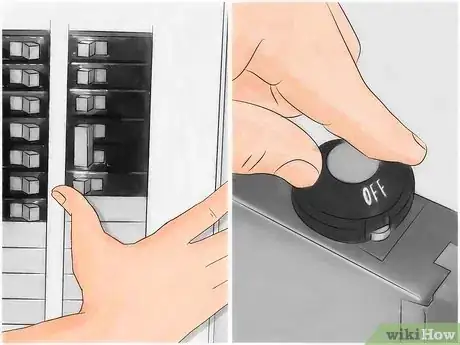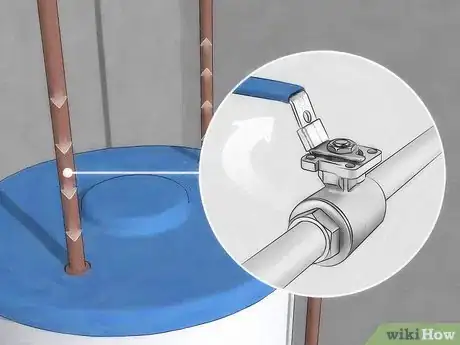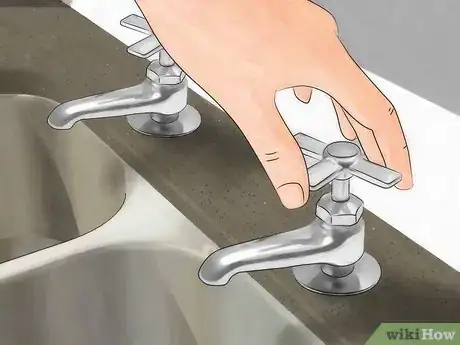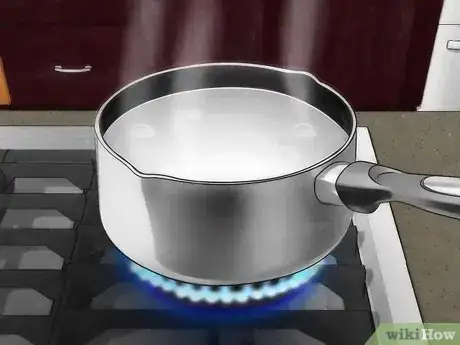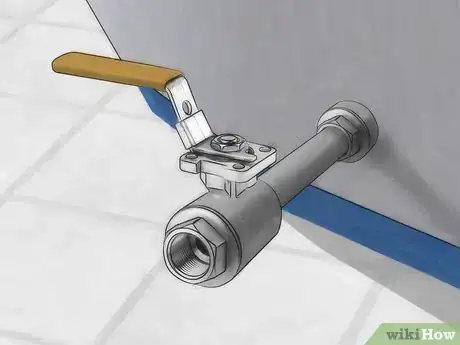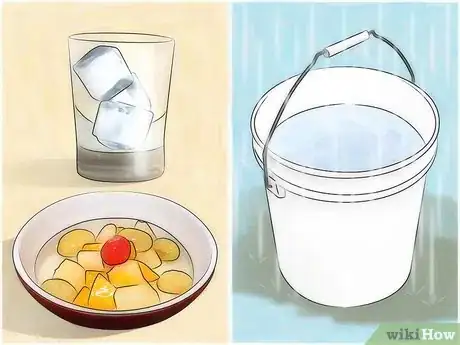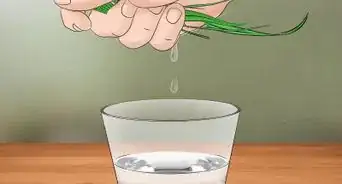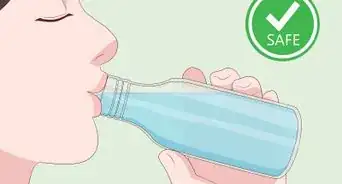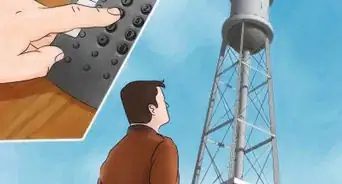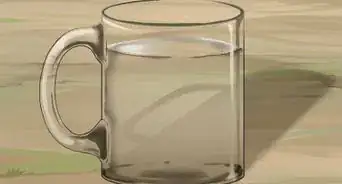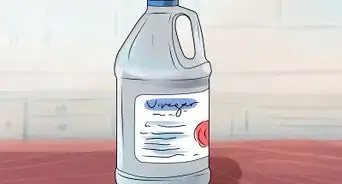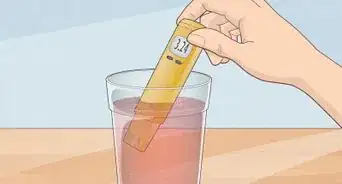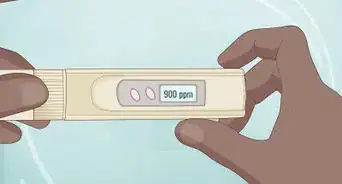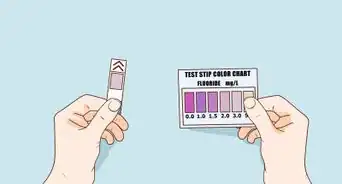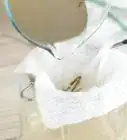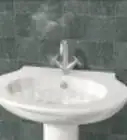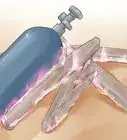This article was co-authored by Patrick Johns. Patrick Johns is a Home Improvement Specialist and the Owner of CatchAll Handyman Services. With more than 28 years of experience, he has worked on a variety of home improvement projects, such as carpentry, plumbing, and door and window installations in both commercial and residential properties.
wikiHow marks an article as reader-approved once it receives enough positive feedback. In this case, several readers have written to tell us that this article was helpful to them, earning it our reader-approved status.
This article has been viewed 218,964 times.
A typical home water heater can provide between 30 and 60 gallons of clean drinking water during a disaster. Hurricanes, floods, earthquakes, and other power outages may prevent you from having many things, but clean drinking water should not be one of them. To reclaim some clean drinking water from you water heater, and to tap your inner MacGyver, this is what you'll need to do.
Steps
Getting Drinking Water from Your Water Heater
-
1Turn off the electricity or gas to the water heater. Turn off the circuit breaker for electric water heaters or close the gas valve for natural gas and propane types. If the power is still on when the tank is empty, your tank will almost certainly sustain significant damage. Most electric water heaters in residential applications are 208/240 volts, and supplied by a double-pole circuit breaker or two fuses rated at 30 amps.[1]
- Some gas valves have a thermostatic control knob facing forward. The "Off - Pilot - On" gas supply knob is located on the top, between the red interlock button the black "push-button" ignitor. Simply rotate the top knob from the "On" to the "Off" position to stop the flow of gas to the burner.
- Some electric-reliant heaters have double-pole 30 amp circuit breakers. Switch the circuit breaker from the "On" position to the "Off." Once off, there is no danger of damaging the heating elements.
-
2Preserve the cleanliness of the water in the tank by closing the supply valve to the tank. When water service is restored, the water department will be pumping water that could be contaminated. This will be fine to use for flushing toilets and for cooking, but not for drinking.[2]
- Determine whether you're dealing with a ball valve or a gate valve. Unlike a traditional gate valve's handle, which needs to be turned completely several times in order to shut off, a ball valve handle is rotated just a 1/4 turn between full on and off positions.
- If older, traditional gate valves were installed instead, bear in mind that the color of the handle does not guarantee an association with the temperature of the water in the pipe.
Advertisement -
3Find the valve at the bottom of the tank for draining. This is where your clean drinking water will come from. Many water heater valves have a connector for hooking up a garden hose to the drain valve. A short 3 foot (0.9 m) length of garden hose will make the collection of the water easier. A washing machine's supply hose is the perfect length and is available in many homes. Connect the hose and open the valve briefly to flush any debris that may have collected in the valve. Make sure the drain, hose, and container are clean before using them.[3]
- Threads are usually provided to connect an ordinary garden hose (or washer supply hose). Some gate valves do not have a traditional handle, but rather a slot at the end of the stem where a handle would normally attach. The slot allows for operation with a screwdriver, or coin. Work this valve gently, as these valves are seldom used more than once or twice per year under normal service conditions, and could be damaged if forced.
-
4Turn on the hot water from any tap in the house. In order for water to be drained from the tank, you must allow air to get into it. This is easy to do by opening any hot water tap in the building such as the kitchen or bathroom sink. When either faucet is open, a sucking sound may be heard whenever water is drawn from the water heater's drain valve, and is normal.[4]
-
5Remove any sediment that has collected at the bottom of the water heater. Water heaters are notorious for trapping sediments. The heavier-than-water sediment sinks and collects at the bottom of the tank because hot water is drawn from the top of the tank, rather than the bottom. If you have sediment in the drinking water let it stand for a period of time to let it settle to the bottom of container.
- Typical mineral sediment that has settled in the hot water is usually harmless, but if your heater has an aluminum anode, there may be a lot of jelly-like aluminum corrosion by-product on the tank bottom.
- Many people mistakenly believe that the tank is made of glass (or another inert substance). It is not. The inside of the tank will likely be lined with glass to prevent corrosion, since corrosion is the leading cause of water heater failure. There is no danger cooking or consuming water that has been contained in a water heater.
Other Practical Considerations
-
1Although water from a water heater is considered safe to drink, consider purifying or filtering it before drinking. Although it's probably fine to drink water from the heater during an emergency, it's best to be on the safe side.[5] You can purify water by boiling it or using iodine or bleach in very small quantities. You can filter water in an emergency by layering filtering agents on top of each other.
-
2Seriously consider replacing the original valve on the water heater with a ball-valve drain assembly. Factory valves do not have a straight path and have small orifices. In hard-water areas, those can easily clog with sediment buildup and then no water will flow from the tank.
-
3In an emergency, consider other options for potable water. If you can't, for whatever reason, access your water heater in an emergency, don't panic. You should have plenty of other options. Consider these to get at potable water:[6]
- Possible indoor sources of water:
- Liquid from canned fruit and vegetables
- Water from the toilet tank (not the toilet bowl), unless it has been chemically treated with toilet cleaners
- Water from melted ice cubes
- Possible outdoor sources of water:
- Water from a rainwater collection system.
- Water from rivers, steams, springs, and other moving bodies of water
- Water from ponds, dams, and lakes
- Possible indoor sources of water:
Warnings
- Allow the tank to fill before restoring power to the water heater. Open the supply valve and wait for the water to run out of the open hot water faucet.⧼thumbs_response⧽
- Turn off the power supply to the tank first. Even if there is a power failure you must unplug, turn off the circuit breaker, or close the gas valve first.⧼thumbs_response⧽
- Be sure that the water has had time to cool before opening any valves on the water heater!⧼thumbs_response⧽
- If you live in an apartment contact the management first.⧼thumbs_response⧽
- Be sure the water inside the water heater is not soft water. It can contain excess sodium (the harder your water supply is, the more sodium is used to soften it), which is not recommended for those with certain health concerns (such as high blood pressure, cardiovascular or kidney disease). If you don't have a water softener...you're good to use the water inside the heater like normal!⧼thumbs_response⧽
Things You'll Need
- Flashlight to find the circuit breaker, plug, and valves if it is dark
- A short water hose to drain the water from the tank. The supply hose for a washing machine is perfect.
- A screwdriver or coin, to operate the drainage valve
- A shallow pan that fits under the valve to collect the water in. If you have a short hose you can use cooking pots, clean bucket, empty plastic gallon jugs, & water bottles.
References
- ↑ https://www.regionalh2o.org/emergency-water-sources-home
- ↑ http://prepforshtf.com/water-heater-emergency-water-supply/
- ↑ http://prepforshtf.com/water-heater-emergency-water-supply/
- ↑ https://www.regionalh2o.org/emergency-water-sources-home
- ↑ http://www.cdc.gov/healthywater/emergency/safe_water/personal.html
- ↑ https://www.cdc.gov/healthywater/emergency/drinking/finding-other-sources.html
